Loss of Control – Inflight Departure: AAIB Report on KA200 Accident
We look at three aspects from the investigation into a fatal air accident in the UK: Recording of aircraft defects, Terrain Avoidance Warning Systems (TAWS) and the carriage of non-crew members on the flight deck.
The UK Air Accidents Investigation Branch (AAIB) has recently issued its report into the fatal Loss of Control – Inflight (LOC-I) accident on 3 October 2015 to Beechcraft B200 Super King Air, G-BYCP.
The aircraft was operated by London Executive Aviation (LEA), described in contemporary trade press report as “UK’s largest charter and management company”. LEA is now part of the Luxaviation Group “the second largest corporate aircraft operator in the world”, according to their website.
History of the Flight
The AAIB explain:
G-BYCP was planned to operate a non-commercial flight from Stapleford Aerodrome [Essex] to RAF Brize Norton [Oxfordshire] with two company employees on board (including the pilot) to pick up two passengers for onward travel.
The aircraft [type] is approved [both in terms of aircraft type certification and approval of the operator] for operation by a single pilot, or by two pilots.
The pilot (the aircraft commander) held a Commercial Pilot’s Licence (CPL) and occupied the left seat and another pilot, who held an Airline Transport Pilot’s Licence (ATPL), occupied the right. …his licence was valid on Bombardier Challenger 300 and Embraer ERJ 135/145 aircraft and not on the King Air.
The pilot reported for work at approximately 0715 hrs for a planned departure at 0815 hrs but he delayed the flight because of poor meteorological visibility.
At approximately 0915 hrs, trees were visible just beyond the end of Runway 22L, indicating that visibility was at least 1,000 m and the pilot decided that conditions were suitable for departure.
The operator’s Operations Manual Part A (OMA) stated that the minimum visibility for any takeoff in the King Air would be 500 m.
Having gained a departure clearance at 0908:
The aircraft took off at 0921 hrs and was observed climbing in a wings level attitude until it faded from view shortly after takeoff.
The aircraft was climbing through approximately 750 ft amsl after takeoff when it began to turn right.
Initial Track of LEA KA200 G-BYCP and Wreckage Location (Credit: AAIB Markings on Goggle Earth Plot)
It continued to climb in the turn until it reached approximately 875 ft amsl when it began to descend.
The descent continued [for about 11 seconds, with the rate of descent reaching 7000ft/min ] until the aircraft struck some trees at the edge of a field, approximately 1.8 nm southwest of the aerodrome.
Eye witnesses capture video of the immediate accident site:
The aircraft was not fitted with a CVR, FDR or [certified] TAWS equipment and was not required to be so, in accordance with relevant airworthiness and operational regulations.
EASA are rulemaking in these areas. Rulemaking tasks RMT.0271 and RMT.0272 refer on CVRs and FDRs (as we discussed in 2014) and a Notice of Proposed Amendment (NPA) is planned for issue in Quarter 1 of 2016. An NPA has already been issued on TAWS (discussed below).
AAIB Conclusions
The AAIB concluded:
Examination of the powerplants showed that they were probably producing medium to high power at impact.
There was contradictory evidence as to whether or not the left inboard flap was fully extended at impact but it was concluded that the aircraft would have been controllable even if there had been a flap asymmetry.
The possibility of a preaccident control restriction could not be discounted, although the late change of aircraft attitude showed that, had there been a restriction, it cleared itself.
The evidence available was consistent with a loss of aircraft control in Instrument Meteorological Conditions (IMC), but this could not be concluded unequivocally because of a lack of evidence from within the cockpit.
However, it is possible the pilot became incapacitated and the additional crew member [sic] was unable to recover the aircraft in the height available.
The AAIB has earlier noted:
The post-mortem examination of the [40 year old] pilot found evidence of an acute dissection of a coronary artery the presence of which indicated that he might have suffered symptoms ranging from impaired consciousness to sudden death. The coronary artery dissection might have occurred spontaneously or have been the result of forces transmitted through the body during the accident sequence, and pathology alone was unable to resolve these opposing possibilities.
The AAIB raised three safety recommendation on TAWS (see below).
Our Focus
In this article we will examine in more detail, three specific aspects discussed in the AAIB report with the widest systemic interest:
- Recording of aircraft defects
- TAWS
- The status of the second person on board
1. Recording of Aircraft Defects / Aircraft Technical Log System
The AAIB report:
The aircraft’s technical log was examined and contained no deferred defects prior to the accident flight. During the course of the investigation the AAIB became aware of a post‑flight ‘Engineering Report’ email reporting system used by the operator to permit flight crew to communicate operational information to the operator. The ‘Engineering Report’ emails also contained aircraft technical defects that were not recorded in the aircraft technical log or aircraft maintenance records.
The aircraft was subject to maintenance regulations as defined in EASA Part M. Part M regulation M.A.403 refers to the recording of aircraft defects:
The post-flight ‘Engineering Report’ emails for the nine months preceding the accident were reviewed. A total of 57 defects were recorded in this period that either met the definition of M.A.403(a), or were subject to a rectification interval specified in the B200 Minimum Equipment List (MEL) as required by M.A.403(c).
None of these defects were recorded in the aircraft technical log, or the aircraft maintenance records, as required by M.A.403(d).
Many of the defects were repeat reports over a series of flights and related to items including inoperative fuel gauges, failed autopilot mode annunciator lights, autopilot faults, inaccurate engine oil pressure and rpm indications, reports of the left engine being slow to accelerate, and a missing stall warning strip. There were no defects reported regarding the aircraft’s flying controls or flap system.
Aircraft maintenance records documenting the Phase 1 inspection carried out on 12 June 2015 referred to four ‘Customer reported defects’ that had been recorded in the ‘Engineering Report’ emails, but not in the technical log or aircraft maintenance records. Rectification of three of the four defects required replacement of defective components with newly overhauled parts. The B200 King Air MEL classifies one of the defects as Category B, requiring rectification within three calendar days of discovery, and the remaining three defects as Category C, requiring rectification within ten days of discovery. A review of the ‘Engineering Report’ emails showed that the Category B defect had been reported 31 days prior to rectification, and the three Category C defects had been reported 156 days prior to rectification.
In the week preceding the accident flight however, the aircraft had performed six flights and the email reporting system did not contain any significant defects apart from a worn main landing gear tyre. This was correctly recorded in the technical log and the tyre was replaced prior to the next flight.
The AAIB say the use of email ‘Engineering Reports’ “circumvented the requirements of EASA Part M regulation M.A.403 for correctly recording defects in the aircraft technical log and aircraft maintenance records”, that in the prior 9 month there were a “high number of defects that were not recorded in the aircraft technical log, and for which rectification actions were not recorded in the aircraft’s technical records” and “where defects were rectified…the rectification interval was well outside MEL allowable time limits”.
They do however say that “the investigation found no evidence that the defects recorded in the ‘Engineering Reports’ directly contributed to the accident”.
The AAIB report that since the accident:
The operator has issued a Flight Crew Notice to all crews informing them of the suspension of the ‘Engineering Report’ email system. The notice instructed them to follow the correct technical log procedures as set out in the operator’s Operations Manual Parts A and B, and the relevant aircraft Minimum Equipment List.
There is no further discussion in the AAIB report on when the practice of ‘Engineering Report’ e-mails started, continued airworthiness management generally, the compliance monitoring system or the regulatory oversight on this matter.
2. TAWS
The AAIB conducted a TAWS trial:
The simulator was equipped with a Honeywell Mk. VII EGPWS, a certified Class A TAWS, which provided information on the alerts that might have been generated in a flight profile similar to the accident flight.
The following aural alerts were triggered…:
a. “bank angle” approximately one second after the aircraft began to descend (at approximately 580 ft agl) and ten seconds before ground contact.
b. “sink rate” approximately six seconds after the aircraft began to descend (at approximately 365 ft agl) and five seconds before ground contact.
c. “pull up” approximately seven seconds after the aircraft began to descend (at approximately 325 ft agl) and four seconds before ground contact.
The AAIB explain that G-BYCP was fitted with two Garmin GNS430W. These offered some features that would be found on a TSO C-151b certified TAWS however the protections of
…a certified Class A [TAWS] or, to a lesser extent, a certified Class B unit (which would lack Excessive Closure Rate to Terrain or Bank Angle protections) were not available. Also, GNS430W units do not provide aural alerts or have any mechanism for external visual alerting on displays remote from the actual units themselves.
Garmin offers a certified Class B solution called ‘TAWS’, which is an option on Garmin’s 500 series units, but this option is not available on the GNS430W which, instead, incorporates Garmin’s non‑certified ‘TERRAIN’ functionality.
The table below summarises the differences between Garmin’s Class B certified 600 series ‘TAWS’, the non-certified ‘TERRAIN’ functionality of the GNS430W fitted.
The modes examined by the AAIB in a study of potential warning times are highlighted in red whilst the other key differences are shown in yellow.
The AAIB asked six commercial UK King Air operators about terrain awareness equipment fitted to their aircraft, whether certified or non-certified, and, of 20 aircraft consisting mainly of King Air 200 and King Air 250 types, four were equipped with a certified solution. A further five were equipped with either Garmin GNS430, GNS530 or GTN750 series units, of which the GNS530 or GTN750 series can be upgraded to a certified TAWS.
This suggested that a minimum of 11 aircraft were without any form of terrain awareness device and, if none of the GNS430, GNS530 or GTN750 series units had been upgraded, then 16 aircraft would not be equipped with a certified solution.
Currently, within the EU, certified TAWS are not required for this category of aeroplane used commercially, unlike the current rules for regulators such as the FAA and Transport Canada which also address privately operated aeroplanes. Further, the draft opinion within the EASA’s NPA on this subject (NPA2015-21 “TAWS operation in IFR and VFR, and TAWS for turbine-powered aeroplanes under 5 700 kg MCTOM able to carry six to nine passengers”), although affecting new build aeroplanes (those issued with individual certificate of airworthiness after 1 January 2019) would exclude aeroplanes currently in service.
Consequently the AAIB make three safety recommendations:
Safety Recommendation 2016-055: It is recommended that the European Aviation Safety Agency require all in‑service and future turbine aircraft with a Maximum Certificated Takeoff Mass of 5,700 kg or less and with a maximum operational passenger seating configuration of between six and nine passengers to be fitted with, as a minimum standard, a Class B Terrain Awareness and Warning System certified to [sic] ETSO-C151b.
Safety Recommendation 2016-056 It is recommended that the International Civil Aviation Organisation revise Annex 6 to the Convention on International Civil Aviation, Part 1 (International Commercial Air Transport – Aeroplanes) to upgrade recommendation 6.15.5 [carriage of TAWS on turbine aeroplanes with a Maximum Certificated Takeoff Mass of 5,700 kg or less and authorised to carry more than five but not more than nine passengers] to a standard.
Safety Recommendation 2016-057 It is recommended that the International Civil Aviation Organisation revise Annex 6 to the Convention on International Civil Aviation, Part 2 (International General Aviation – Aeroplanes) to upgrade recommendation 2.4.11.2 [carriage of TAWS on turbine aeroplanes with a Maximum Certificated Takeoff Mass of 5,700 kg or less and authorised to carry more than five but not more than nine passengers] to a standard.
UPDATE 11 April 2017: AAIB updates the responses to recommendations.
3. The Status of the Second Person Onboard
The UK CAA issued Flight Operations Communication (FODCOM) 21/2010 on “Passengers, sometimes called ‘pilots’ assistants’” on 16 July 2010 (with a 2011 internal review date). The CAA explained that persons carried on an aircraft are either crew or passengers, saying:
For Commercial Air Transport and Public Transport operations … no person may be carried on the flight deck except … an operating crew member or a passenger permitted to occupy a flight deck seat in accordance with instructions in the operator’s operations manual.
Unless they hold an appropriate flight crew licence entitling them to act as pilot on the flight, such persons can only be passengers and may not undertake any of the pilot’s duties, whether handling the controls, operating any aircraft equipment (including the radios) or completing flight documentation.
Such passengers are not ‘pilot assistants’ or ‘safety pilots’ nor should they be permitted to contribute in any way to the operation of the aircraft.
The AAIB note that:
Although the FODCOM pre-dated the implementation of EU 965/2012 [Air Ops Regulation], the CAA confirmed that…the FODCOM was still valid. On 23 November 2015, the CAA issued Information Notice (IN) 2015/110, Passengers Carried on the Flight Deck Sometimes Called ‘Pilots’ Assistants’. The IN was written in substantially the same terms as the FODCOM.
The CAA stated [to AAIB] that, because the pilot in the right seat of G-BYCP was not qualified on the B200 King Air, that person was a passenger.
After FODCOM 21/2010 was issued, the operator undertook a risk assessment on single-pilot operations.
The assessment considered events that might trigger an ‘Undesirable Operational State’ (UOS) which might in turn lead to a major accident. The UOS was defined with reference to single-pilot operations as a ‘severe reduction in ‘Spare Capacity’ to deal with unforeseen circumstances’.
Risk controls initially identified were:
- Stricter regulatory medical requirements for single-pilot commercial operations.
- Minimum training requirements in the OMA with regards to hours and experience.
- Six-monthly Operational Proficiency Checks conducted in the aircraft.
- More restrictive flight time limitations and operational procedures, including in relation to the use of the autopilot.
Recovery controls were:
- Training.
- Crew Resource Management (CRM).
- Pilot experience.
The operator then conducted a quantitative risk assessment:
The overall risk of an accident was quantified as one in every one million sectors and the result of the assessment, according to the assessment nomenclature, was ‘Improve’.
The operator undertook the risk assessment again with an additional preventative barrier i.e. the use of a ‘second crew member’.
The operator judged that the effect of the additional crew member would be to reduce the probability by a factor of 100.
…the overall risk of an accident became one in every 100 million sectors and the result of the assessment was ‘Monitor’.
Following the risk assessment, the operator agreed with the CAA to remove from its Operations Manual all references to ‘Pilot’s Assistants’ and replace them with ‘Additional crew members’. The additional crew members would have ‘no operational control of the aircraft’.
The operator stated that the duties of the additional crew member were:
- Read the checklist
- Complete the Pilots Log
- Operate the R/T
- Adhere to [company] SOPs
- Monitor the Captain’s actions and be ready to assist if the Captain requires any assistance.
- Express his/her opinion on any action taken by the Captain that may seem abnormal or unclear. Follow all briefs given by the Captain.’
However these duties and procedures to be used by the additional crew member were not contained in the operator’s OMB which stated that:
[The normal procedures] section [of OMB] assumes that a second pilot is carried. The second pilot carries out the Pilot Monitoring [PM] role. When two pilots are not carried, the Captain will complete all items.
The AAIB comment that the OMB:
…stated that, in two-crew operations, the PM would, among other things, monitor the flightpath and point out significant un-planned deviations. The PM would call “bank angle” should the angle of bank exceed 30° and “sink rate” should there be an excessive rate of descent ‘according to phase of flight and altitude’.
No comment is made by AAIB on why the anomaly between the 2010 risk assessment (and practice) versus the OM Part B was not detected by safety reporting, compliance monitoring or regulatory oversight.
UPDATE 18 June 2018: EASA published further responses in their Annual Safety Recommendations Review 2017 .
Safety Resources
Aerossurance has previously written the following:
- Gulfstream G-IV Take Off Accident & Human Factors
- Fatal G-IV Runway Excursion Accident in France – Lessons
- Business Jet Collides With ‘Uncharted’ Obstacle During Go-Around
- Culture + Non Compliance + Mechanical Failures = DC3 Accident
- Catastrophe in the Congo – The Company That Lost its Board of Directors
- Execuflight Hawker 700 N237WR Akron Accident: Casual Compliance
- How To Develop Your Organisation’s Safety Culture
- Chernobyl: 30 Years On – Lessons in Safety Culture
- 10 Year Anniversary: Loss of RAF Nimrod MR2 XV230
- UPDATE 26 Match 2018: Indian King Air Take Off Accident: Organisational & Training Weaknesses
- UPDATE 17 November 2018: Investigation into F-22A Take Off Accident Highlights a Cultural Issue
- UPDATE 26 January 2019: MC-12W Loss of Control Orbiting Over Afghanistan: Lessons in Training and Urgent Operational Requirements
UPDATE 10 May 2017: EASA published their responses to date on the safety recommendations (catalogued in their Annual Safety Recommendations Review 2016 issued today).
Aerossurance is pleased to support and present at the Chartered Institute of Ergonomics & Human Factors’ (CIEHF) Human Factors in Aviation Safety Conference that takes place at the Radison Blu Hotel, East Midlands Airport, 7-8 November 2016.
Aerossurance is pleased to sponsor the 2017 European Society of Air Safety Investigators (ESASI) 8th Regional Seminar in Ljubljana, Slovenia on 19 and 20 April 2017. Registration is just €100 per delegate. To register for the seminar please follow this link. ESASI is the European chapter of the International Society of Air Safety Investigators (ISASI).


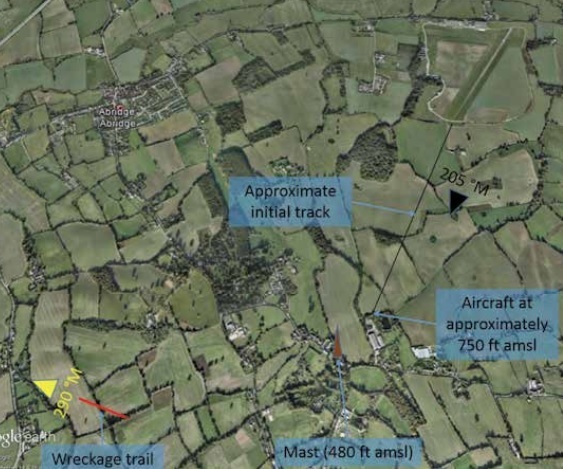
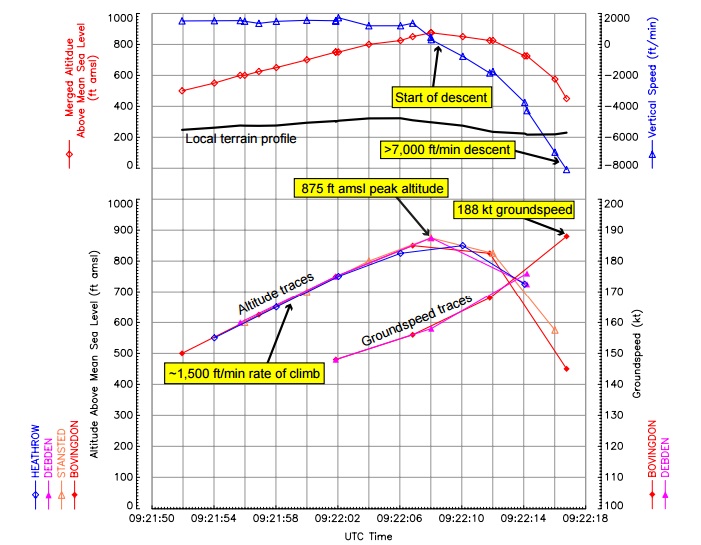
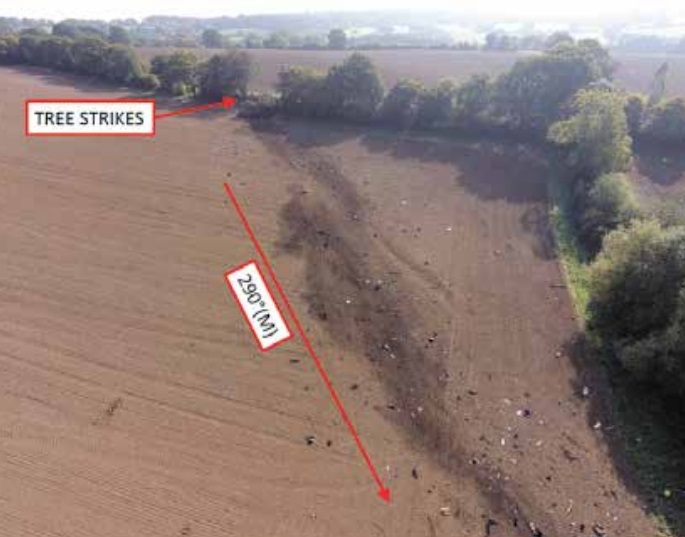
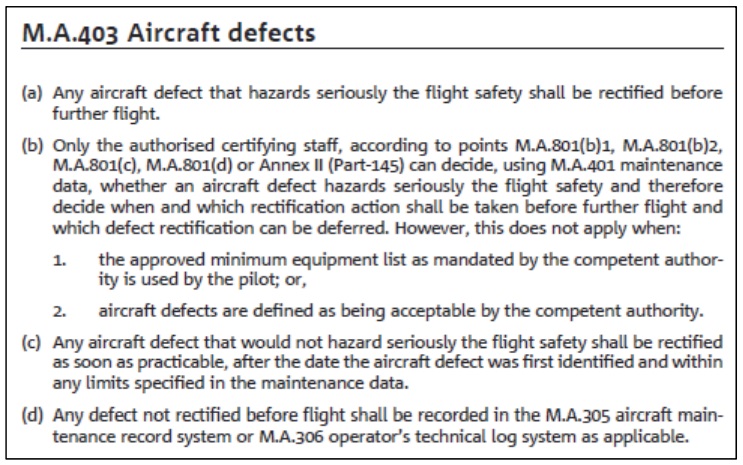
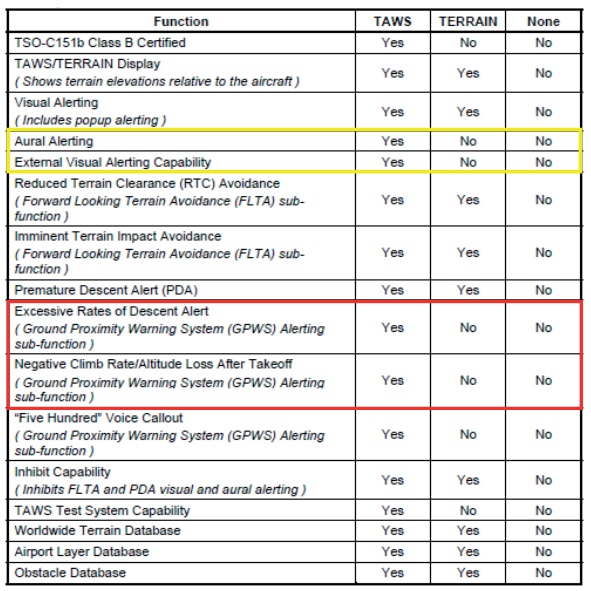
Recent Comments